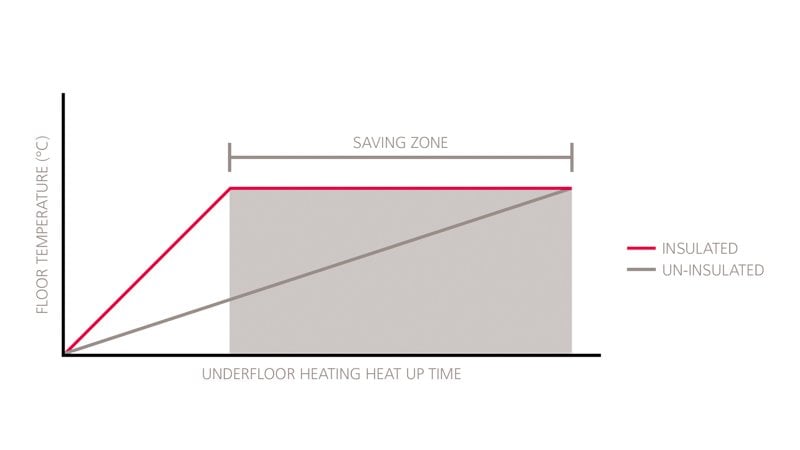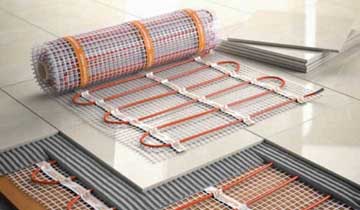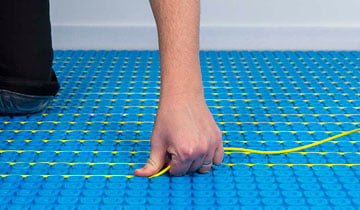18 min read
The top 5 electric underfloor heating brands to look out for in 2023
After the success of our ‘The top 5 electric underfloor heating brands for 2022?’ blog, we thought it would only be right to update it for 2023 and...

You’ve made the decision to install and use electric underfloor heating, you’re ready to make the purchase, but have you covered all bases, especially how to make your new system as efficient as possible? We’ve provided the answers on “How do you make underfloor heating more efficient?”
Efficiency is something which tends to be forgotten, don’t worry you’re not the only one. There’s nothing worse than buying something new and then finding out it’s costing you more than you originally thought and/or it is not providing the results you expected. We’ve all found a bargain piece of furniture on eBay and purchased quickly without double checking the size, only to find out it arrives in a small box, ready for a dolls house. Whoops! Not the outcome anyone wants unless that was your intended purchase all along.
We’ve compiled some key considerations to help you make your underfloor heating system efficient, allowing you to rest easily and comfortably in the warmth with the knowledge that it won’t be costing you the earth. In this blog we discuss how you can make the most of your new underfloor heating system, from the importance of insulation to controlling your heating once everything is installed and working.
So, read these steps to making your underfloor heating more efficient.
Let’s start at the very beginning. Records of underfloor heating date back to the Roman period…not that far back! Joking aside not a huge amount has changed in underfloor heating, apart from you can get wet systems and electric systems. You can discover more about which system is right for you in our other blog ‘wet vs electric’ – https://www.thermosphere.com/electric-underfloor-heating-vs-wet-underfloor-heating/
It’s not just the system which has changed but floor build ups have become thinner and thinner over the ages as technology continues to develop. The key part is they have become more efficient, 100% efficient in fact with minimal energy waste. Every penny spent is converted into heat and is probably one of the key reasons you’re choosing underfloor heating in the first place. If you’re changing from radiators, underfloor heating uses 15-40% less energy than traditional radiators, you’re already one step towards heating efficiency.
Electric underfloor heating is 100% efficient at point of use. However, to maximise efficiency there are several things that need to be considered.
Designing a system and making it efficient requires these considerations to ensure you’re not disappointed with your new underfloor heating system. We’ve made an estimated cost calculation tool to give you instant results and a benchmark to help you with the daily running cost for different room types and underfloor heating systems.

Insulation is key to any underfloor heating system. Having the right insulation and floor build up at the very beginning can increase efficiency from 50% instantly. This works by ensuring all the heat your underfloor heating is producing is heating the floor rather than 50% being lost to the substrate below. But what types of insulation boards are available?
Uncoated insulation boards
A cost-effective thermal insulation for concrete and screed substrates. Improves insulation and reduces heat loss into the substrate. Made from high-density extruded polystyrene and can be installed using a flexible cement-based tile adhesive.
Coated insulation boards
Thermal insulation for timber substrates, perfect for bathrooms and wet rooms especially with wet proof properties. Made from a high-density extruded polystyrene core with a fibreglass reinforced cement coating on both sides adding rigidity, strength and thermal insulation to your substrate.
Increasing efficiency makes insulation boards a must! Discover more details about insulation boards with our post ‘Why removing insulation board is costing homeowners’ discussing them in more detail and where to install them.
After insulation the next major efficiency boost is maximising control of your underfloor heating with a thermostat. The correct heating schedule can provide optimum efficiency, while maintaining perfect levels of comfort. Setting up heating zones with thermostats in each room provides complete control, meaning the heating is only on in certain rooms when required, rather than the whole house being heated at once.
There are a wide variety of thermostats available depending on how you like to control your heating. The main consideration to remember is setting a heating schedule which fits your lifestyle while saving you time and money.
Here’s a quick rundown of the type of thermostats you can expect, but if you’d like to delve deeper into all the possible capabilities, have a read of our thermostat blog.
Manual thermostat
Keeping things simple. Control the heating in a room that isn’t used frequently, manual controls when you want your heating on. Especially efficient if you forget to turn it on and very inefficient if you forget to turn it off!
Examples would be MSTAT by Warmup, ProWarm™ Pro Digital by ProWarm™, TPS31 by Heat Mat and Manual thermostat by ThermoSphere.
Programmable thermostat
On the path to energy efficiency and reducing those all-important heating bills. Setting heating programmes and extra energy saving features, but without the bells and whistles, this is for you.
Examples would be Tempo and 3iE by Warmup, NGTouch by Heat Mat and Programmable thermostat by ThermoSphere.
Bluetooth thermostat
The fastest and easiest thermostat to set a heating schedule, we even managed a whole week schedule in under a minute! The BT21 thermostat, control with the app with Bluetooth connectivity. No internet. No hubs. No worries, just simple fast and effective.
Smart thermostat
Control your heating from anywhere setting up heating schedules on the go to fit your lifestyle with the app. When you’re at home just use your voice for with Voice command device integration, all while monitoring your energy consumption.
Examples would be 4iE Smart WiFi thermostat or 6iE Smart WiFi thermostat by Warmup, ProWarm™ ProTouch Wifi or ProWarm™ ProTouch™ IQ by ProWarm™ or SmartHome thermostat by ThermoSphere.
Dual Control thermostat
All the power of the programmable thermostat, but with the ability to control two items at once, total control made easy. The unique dual control thermostat, the perfect combination for towel rails and underfloor heating in the bathroom.
Make sure you’ve considered all these points and you won’t be disappointed with your new underfloor heating system keeping you warm this year. Efficiency is key to providing you with the comfort you deserve, but without hitting your wallet.
For further information our electric underfloor heating guide provides the platform for discovering more about the products we have available and how they can help keep your new underfloor heating system efficient, keep costs to a minimum and saving you money in the long term.
If you’d like to discuss and go through the best heating system for you, our team are on hand to help. Contact us or call us on 08000 195899.

18 min read
After the success of our ‘The top 5 electric underfloor heating brands for 2022?’ blog, we thought it would only be right to update it for 2023 and...

19 min read
Who are the top 5 electric underfloor heating brands for 2022? Straight off the bat, you may be thinking ‘Why is a British manufacturer of electric...

8 min read
If you are in the market for an electric underfloor heating system for your next home renovation, then you have landed in the perfect place. We’ve...